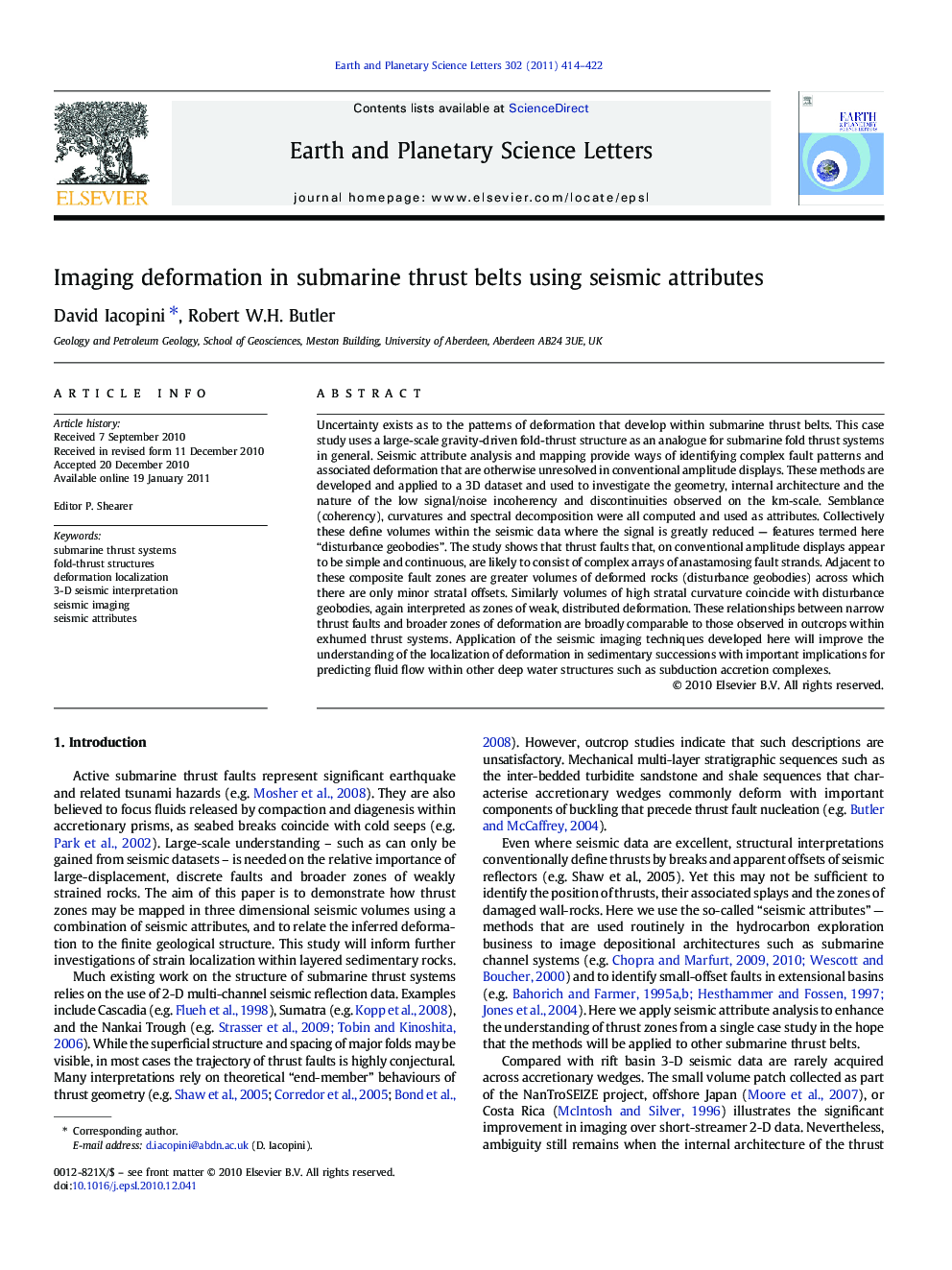| کد مقاله | کد نشریه | سال انتشار | مقاله انگلیسی | نسخه تمام متن |
|---|---|---|---|---|
| 4678108 | 1634835 | 2011 | 9 صفحه PDF | دانلود رایگان |

Uncertainty exists as to the patterns of deformation that develop within submarine thrust belts. This case study uses a large-scale gravity-driven fold-thrust structure as an analogue for submarine fold thrust systems in general. Seismic attribute analysis and mapping provide ways of identifying complex fault patterns and associated deformation that are otherwise unresolved in conventional amplitude displays. These methods are developed and applied to a 3D dataset and used to investigate the geometry, internal architecture and the nature of the low signal/noise incoherency and discontinuities observed on the km-scale. Semblance (coherency), curvatures and spectral decomposition were all computed and used as attributes. Collectively these define volumes within the seismic data where the signal is greatly reduced — features termed here “disturbance geobodies”. The study shows that thrust faults that, on conventional amplitude displays appear to be simple and continuous, are likely to consist of complex arrays of anastamosing fault strands. Adjacent to these composite fault zones are greater volumes of deformed rocks (disturbance geobodies) across which there are only minor stratal offsets. Similarly volumes of high stratal curvature coincide with disturbance geobodies, again interpreted as zones of weak, distributed deformation. These relationships between narrow thrust faults and broader zones of deformation are broadly comparable to those observed in outcrops within exhumed thrust systems. Application of the seismic imaging techniques developed here will improve the understanding of the localization of deformation in sedimentary successions with important implications for predicting fluid flow within other deep water structures such as subduction accretion complexes.
Research Highlights
► 3D seismic imaging is used to detect deformation in submarine thrust belts.
► Zones of disturbed seismic frequency and amplitude are mapped around km-sized folds.
► These seismic attributes reveal narrow thrusts, plus distributed faulting and strain.
► Strain distributed away from major faults is more prevalent than hitherto recognised.
► Thrust zone localization is complex, with broad tracts of anastamosing deformation.
Journal: Earth and Planetary Science Letters - Volume 302, Issues 3–4, 1 February 2011, Pages 414–422